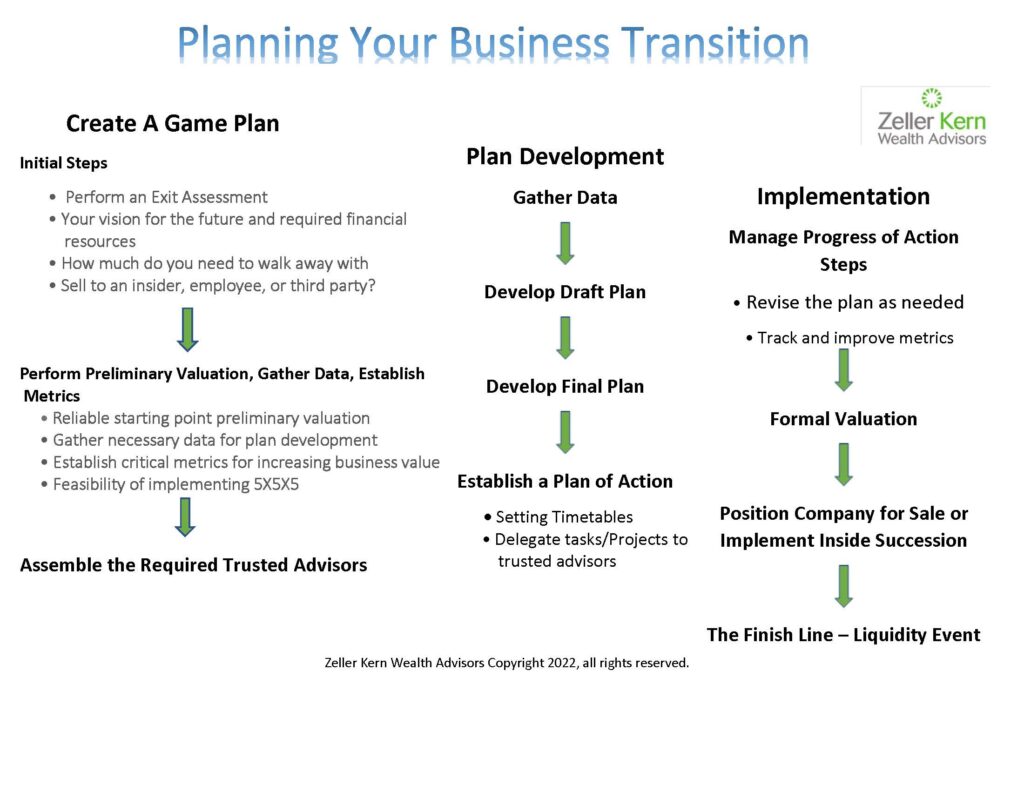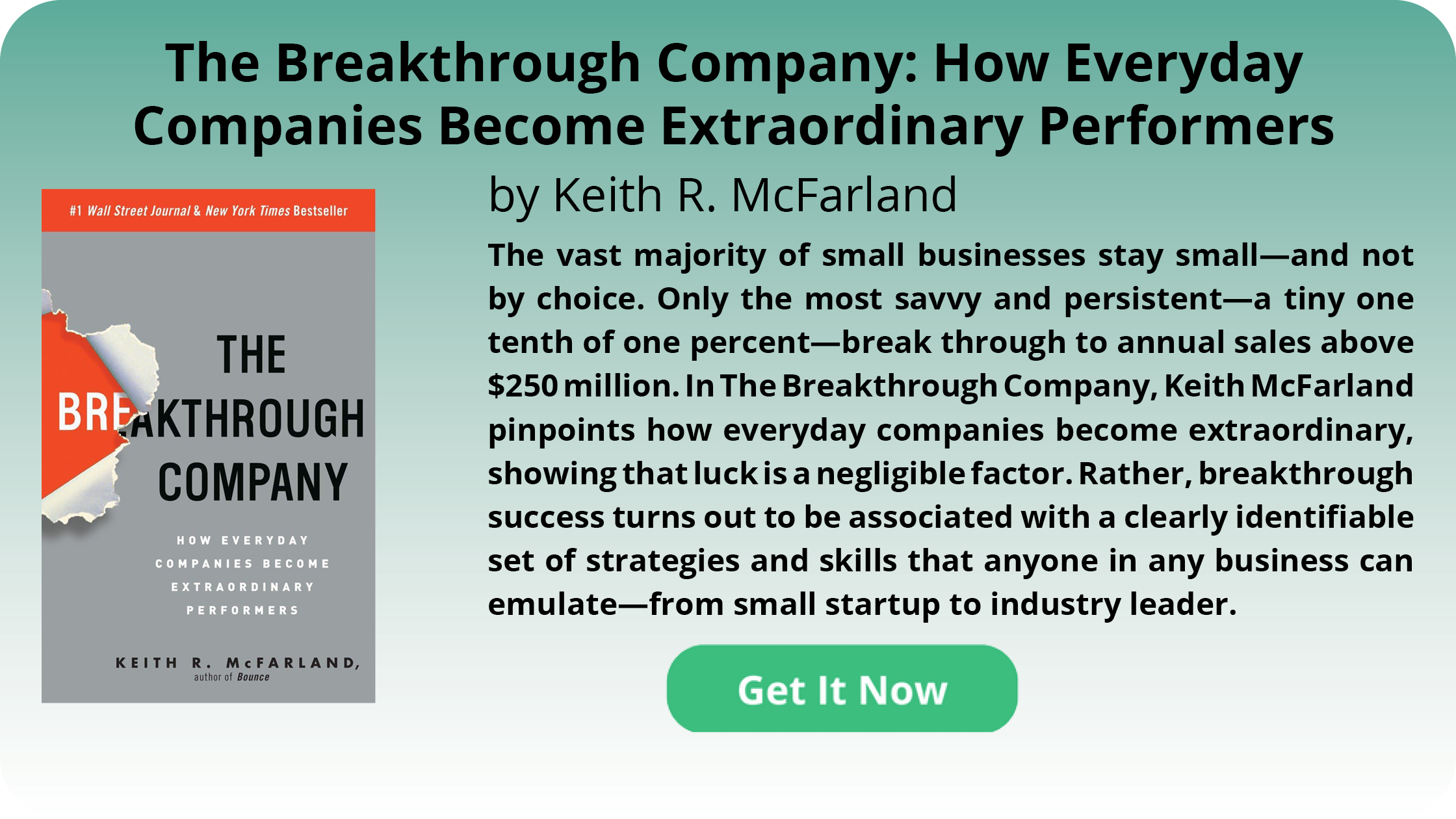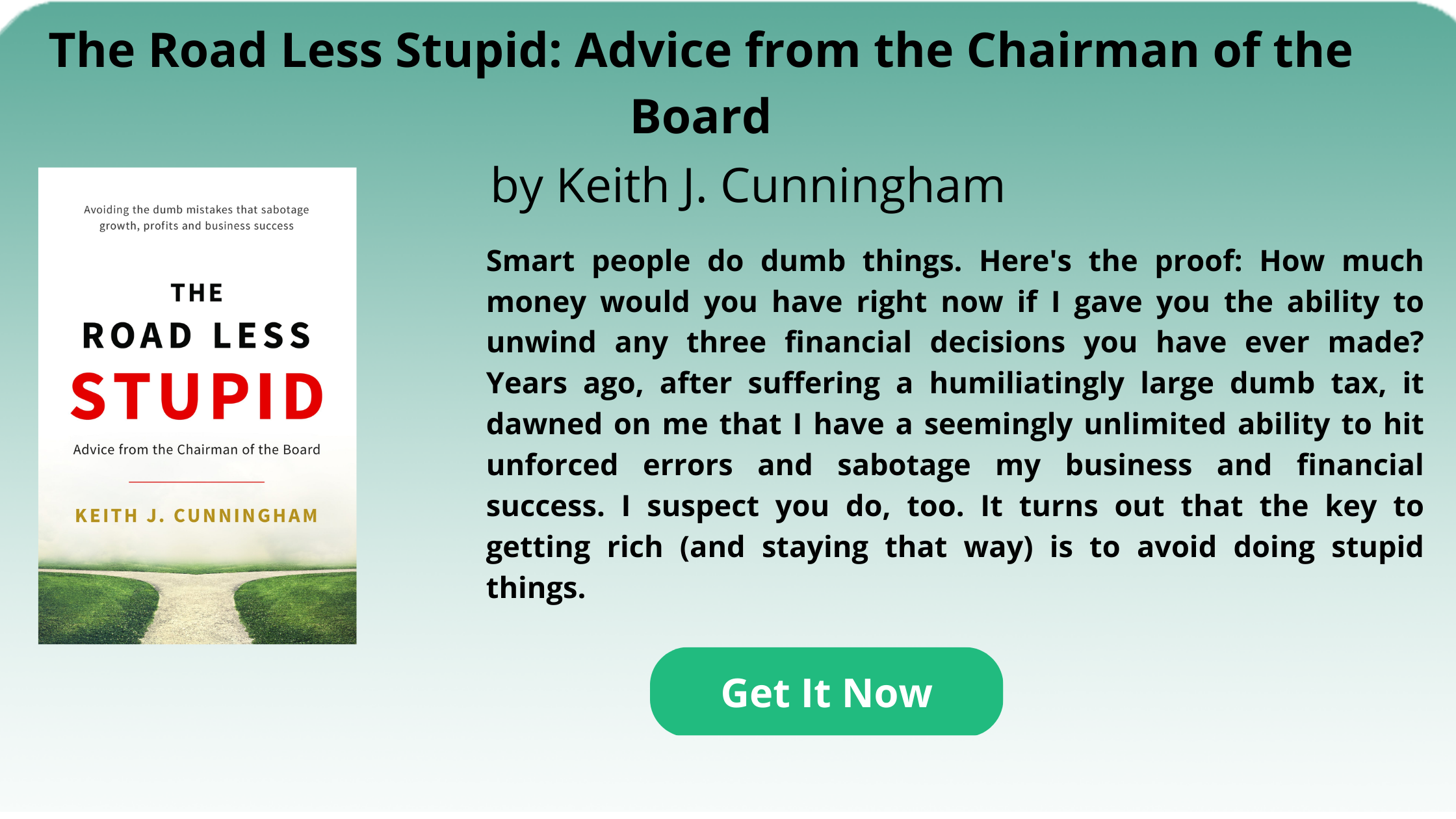As I have mentioned many times before when writing articles on business exit planning, doing a proper exit plan takes time and usually requires a methodical process. Over the years, I have developed an exit planning process that was manifested out of the knowledge of a comprehensive financial planning process, and what I have learned over many years of being a member of the Business Enterprise Institute.
The business owner needs to realize that the longer he or she gives themselves to properly plan their exit, the more likely that there will be far more flexibility in how and when to exit, how much they sell it for, and being able to time the exit just right – Plus, having all of their “ducks are in a row” ahead of time potentially gives the owner more leverage in negotiating the sale with the buyer.
One of the critical steps in business exit planning is obtaining a business valuation. So, the question is, when does the owner get a valuation? Well, the answer is arguably twice – once at the beginning of the exit planning process, and once when the owner is prepared to sell the business. This is illustrated in the exit planning diagram below.

The first instance in getting a business valuation, you will notice, is in the first section of our Exit Planning Process titled – “Create a Game Plan.” The first step in the exit planning process is the “initial steps” section. This is where the business owner asks some serious and reflective questions about themselves related to what are they going to do after their exit. An owner’s purpose for the next chapter of their life needs to be clarified. All sorts of obstacles can be put into place, subconsciously by the owner, if they don’t have clarity with this issue. The likelihood of procrastination goes way up. Please reference my prior article titled: Exiting Your Business Happily, Often Requires a Strong Personal Vision
Along with creating clarity for life after the sale, the owner needs to determine how much they would like to receive in the sale, or how much they need to walk away with from the sale to make their life work the way they want, afterwards. This is determined by assessing how much income the owner would like to generate from personal investment assets, once the sale of the business has occurred. We would then tabulate what the owner has accumulated, financially, outside of the business already, versus required capital to generate the retirement income. The difference would be the required after-tax proceeds needed to walk away with from the sale of the business.
However, if the business is successful enough, meaning it’s worth a lot more than what proceeds they need from the sale, this step becomes less important.
But to complete this step in the process, the owner will need to get a preliminary valuation. This is a quick and general valuation and costs far less then a formal valuation. But upon completing this valuation, the owner will know, approximately, what the business is currently worth, versus what it needs to be worth when the sale occurs. It also reflects how much work they need to do to make that happen and indicate how much time we need to get there.
From there, the formulation of a Business Exit Plan can begin. Once the exit plan has been implemented, which may take three to five years, the business owner is theoretically ready to engage in the sale of the business. This is when the second and final valuation occurs, which is a more in-depth formal valuation.
This valuation is performed by a certified valuation expert, and is a very solid valuation used in the negotiation of the sale as well as for any legal or tax purposes.
There are many other areas that need to be addressed within a successful exit plan, but valuations are an important step that is done at the beginning of an exit plan and towards the end of the planning process.
I hope you find this article useful. If you have any questions on this subject, feel free to contact me at szeller@zellerkern.com.
Steve Zeller

Steven E. Zeller
Steven Zeller is a CERTIFIED FINANCIAL PLANNER™ professional, Accredited Investment Fiduciary®, Certified Exit Planner, practicing Wealth Advisor, and serves clients nationwide. He has over 24 years of experience within his profession. READ MORE
What Steve Writes About

I write about the latest thoughts and topics that impact high net worth families, individuals, and business owners. The building and sustainability of family wealth and a business is an exciting journey, and I have a passion to help them along the way to grow and thrive.
The latest book that Steve is reading. He reads, all he can, material relevant to the high net worth family and business owners, so that he may pass it onto his readers.




Connect With Steve